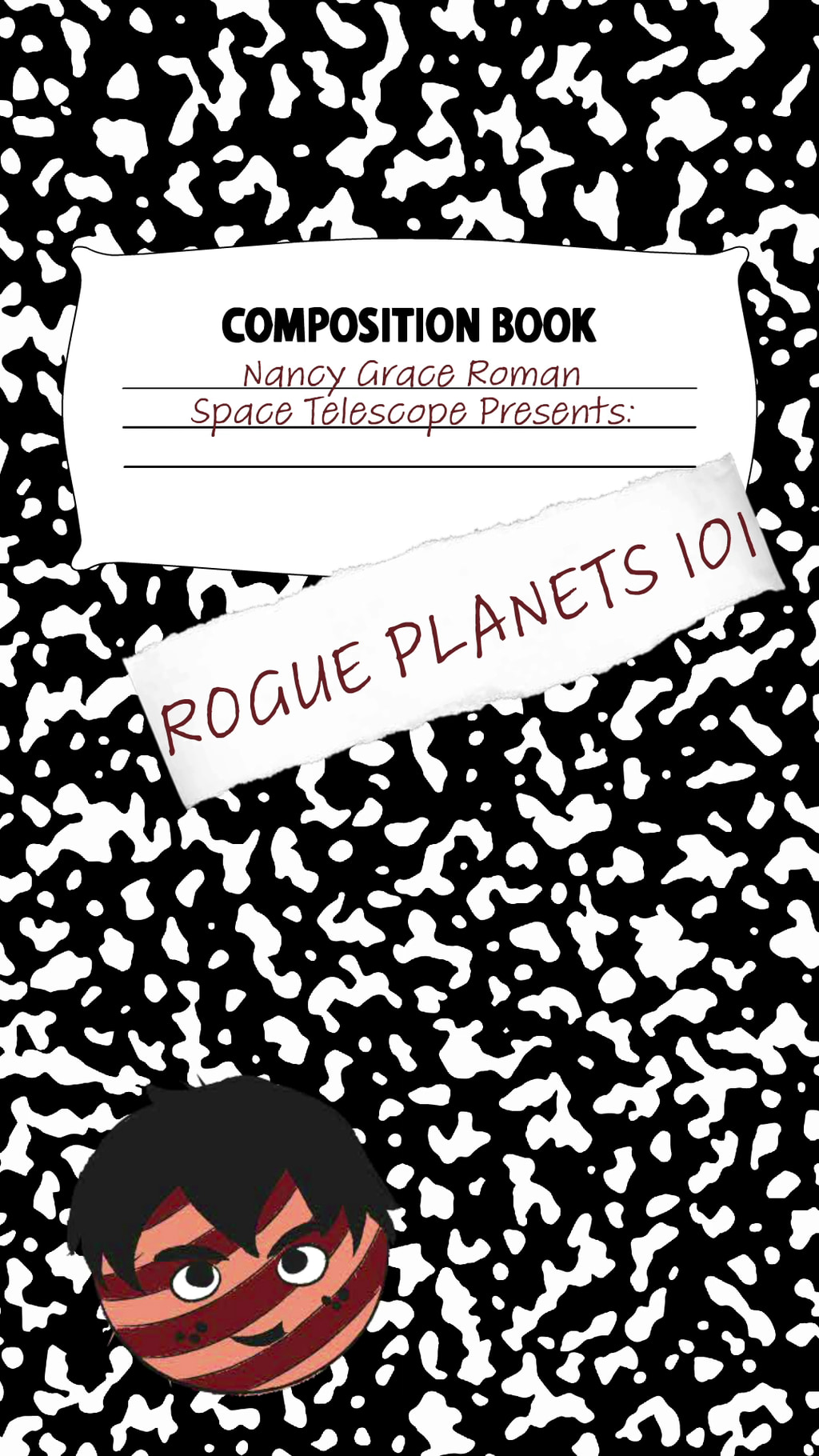Roman Space Telescope Microlensing Animations
This animation illustrates the concept of gravitational microlensing. When one star in the sky appears to pass nearly in front of another, the light rays of the background source star become bent due to the warped space-time around the foreground star. This star is then a virtual magnifying glass, amplifying the brightness of the background source star, so we refer to the foreground star as the lens star. If the lens star harbors a planetary system, then those planets can also act as lenses, each one producing a short deviation in the brightness of the source. Thus we discover the presence of exoplanets, and measure its mass and separation from its star.
Credit: NASA's Goddard Space Flight Center/CI Lab
Watch this video on the NASA.gov Video YouTube channel.
This animation illustrates two ways a gravitational microlensing event could look to an observer. At top is the way it could appear to a telescope able to resolve the features. The source star appears to move and distort as its light is warped by the closer lensing star and its planet. At bottom is a light curve showing the intensity of light from the event. As the two stars reach best alignment, the signal reaches its peak. The planet orbiting the lensing star is detectable as a brief change in brightness.
Credit: NASA's Goddard Space Flight Center/CI Lab
Watch this video on the NASA.gov Video YouTube channel.
This pair of animations compare signals from two planet detection methods – microlensing (top) and transit (bottom) – for high- and low-mass planets. Microlensing signals from small planets are rare and brief, but they’re stronger than the signals from other methods.
Credit: NASA's Goddard Space Flight Center/CI Lab
Watch this video on the NASA.gov Video YouTube channel.
The Roman Space Telescope will make its microlensing observations in the direction of the center of the Milky Way galaxy. The higher density of stars will yield more microlensing events, including those that reveal exoplanets.
Credit: NASA's Goddard Space Flight Center/CI Lab
Watch this video on the NASA.gov Video YouTube channel.
The Roman Space Telescope will have Hubble-like angular resolution since it will orbit above Earth’s atmosphere, enabling it to separate host and source stars from microlensing events. Its wide field of view will allow the Roman Space Telescope to classify planets’ stars on an unprecedented scale, adding to our understanding of the type of systems throughout the galaxy – including those like our own.
Credit: NASA's Goddard Space Flight Center/CI Lab
Watch this video on the NASA.gov Video YouTube channel.
This animation illustrates the concept of gravitational microlensing with a rogue planet — a planet that does not orbit a star. When the rogue planet appears to pass nearly in front of a background source star, the light rays of the source star become bent due to the warped space-time around the foreground planet. This planet is then a virtual magnifying glass, amplifying the brightness of the background source star.
Credit: NASA's Goddard Space Flight Center/CI Lab
This animation illustrates the concept of gravitational microlensing with a black hole. When the black hole appears to pass nearly in front of a background star, the light rays of the source star become bent due to the warped space-time around the foreground black hole. It becomes a virtual magnifying glass, amplifying the brightness of the distant background star.
Credit: NASA's Goddard Space Flight Center/CI Lab
This animation illustrates the concept of gravitational microlensing with a black hole. When the black hole appears to pass nearly in front of a background star, the light rays of the source star become bent due to the warped space-time around the foreground black hole. It becomes a virtual magnifying glass, amplifying the brightness of the distant background star. Unlike when a star or planet is the lensing object, black holes warp space-time so much that it noticeably alters the distant star’s apparent location in the sky, as illustrated with the inset. The two images caused by lensing are too close to be spatially resolved, but changing brightness of the two images produce a shift in the position of the source. To illustrate the shift, the inset only shows how the position of the source changes without showing the brightening.
Credit: NASA's Goddard Space Flight Center/CI Lab
Watch this video on the NASA.gov Video YouTube channel.
Inset from the above.
Credit: NASA's Goddard Space Flight Center/CI Lab
For More Information
Credits
Please give credit for this item to:
NASA's Goddard Space Flight Center Conceptual Image Lab
-
Animator
- Adriana Manrique Gutierrez (USRA)
-
Producer
- Scott Wiessinger (USRA)
-
Communications lead
- Claire Andreoli (NASA/GSFC)
-
Science writer
- Ashley Balzer (GSFC Interns)
-
Scientists
- David P. Bennett (UMBC)
- Dominic Benford (NASA/HQ)
- Scott Gaudi (Ohio State University)
-
Science advisor
- Samson Johnson (Ohio State University)
Release date
This page was originally published on Monday, March 30, 2020.
This page was last updated on Wednesday, June 14, 2023 at 10:38 PM EDT.

